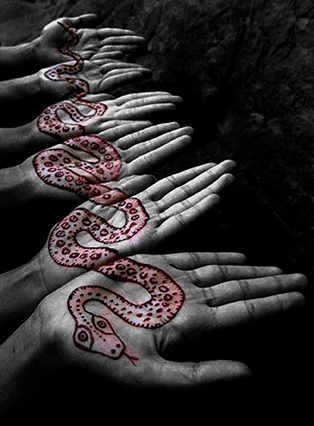RED IRON OXIDE
Red Ochre
Red Ochre is composed mainly of iron oxide, which
Word comes from Greek Hema meaning Blood. Used from prehistory and throughout history, these
Permanent pigment can be safely mixed with other pigments.
Ochre very widely in transparency, some are quite Opaque, while others are valued for their use as glazes.
History of Red Ochre:
Prehistoric dwellers may have discovered that unlike the dye colors derived from animal and vegetable sources (which we do not have traces anymore), the color that came from iron oxide deposits in the earth would not fade with the changing environment. For this reason, it is estimated that men traveled long and far to maintain a steady supply of red pigment. Throughout the Middle Ages and the Renaissance, it continued to be used by painters. Dug right out of the earth and shaped into sticks with knives, hmeatite chalks were ready for drawing. Natural red chalks, with their rich, warm color, were popular from about 1500 to 1900. Such artists as Michelangelo, Rembrandt and Antoine Watteau used this medium to produce some of the most coveted drawings in the world today. By the 18th century, synthetic red iron oxide pigments were being made in a laboratory setting. Called Mars Red, these pigments were found to have all the properties, including durability and permanence, of their natural counterparts.
Physical Properties of Hematite
Hematite has an extremely variable appearance. Its luster can range from earthy to submetallic to metallic. Its color ranges include red to brown and black to gray to silver. It occurs in many forms that include micaceous, massive, crystalline, botryoidal, fibrous, oolitic, and others.
Even though hematite has a highly variable appearance, it always produces a reddish streak. Students in introductory geology courses are usually surprised to see a silver-colored mineral produce a reddish streak. They quickly learn that the reddish streak is the most important clue for identifying hematite.
| Chemical Classification | oxide |
| Color | black to steel-gray to silver; red to reddish brown to black |
| Streak | red to reddish brown |
| Luster | metallic, submetallic, earthy
|
| Diaphaneity | opaque |
| Cleavage | none
|
| Mohs | 5 to 6 1/2
|
| Hardness | Specific Gravity 5.0 to 5.3
|
| Diagnostic Properties | red streak, specific gravity
|
| Chemical Composition | Fe2O3
|
| Crystal System | trigonal
|
| Uses | the most important ore of iron, pigment, heavy media separation, radiation shielding, ballast, polishing compounds, a minor gemstone |

